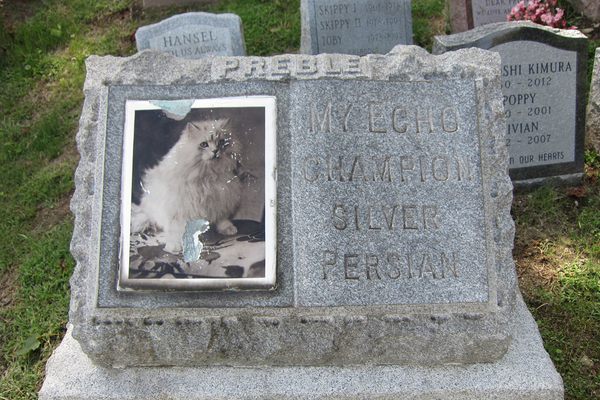The Modest Victorian Proposal to Electroplate Corpses Into Beautiful Statues
In last week’s Morbid Monday, we brought you the strange case of the Fisk mummy coffin — a metal casket shaped like a draped corpse. It turns out that the Victorians’ interest in metallic memorials didn’t end there. Some were proposing that corpses be electroplated and turned into statues.
The metal embalming was brought to our attention by History Banter, and while it sounds like something out of a Hammer horror film, it turns out that electroplating the dead was very seriously proposed by at least two inventors. As the Montana Digital Newspaper Project cites in their post on the electroplating, one Paris physician avowed that “modern Cleopatras may now smile in their last moments, knowing full well that their beauty will be handed down to future generations.” An illustration from a 1971 book called Victorian Inventions by Leonard De Vries, has a mad scientist interpretation of Varlot’s process, charmingly showing a child in a sort of limp pose propped up inside a bell jar.
This French practitioner they refer to is one Dr. Varlot, who appears to be the first to suggest electroplating to turn people into statues in the mid-19th century, but was not the last.
via US Patent Office
Quigley’s Cabinet discovered a 1934 patent by one Levon G. Kassabian for a “Method of Preserving Dead Bodies” which involved “the coating or plating of the bodies which have preferably been embalmed with metal or metals.” Kassabian elaborates how to coat a body with wax and cover it with a conducting solution before wrapping it with copper wire and then carrying out the electroplating process so your dearly departed is turned into a gilded ornament. Curiously, in Christine Quigley’s book The Corpse: A History she adds another name to the trail of electroplating doctors, stating that Dr. Thomas Holmes, the “father of embalming,” patented an electroplating process to turn bodies “into statues.” Considering Holmes died in 1900, it’s presumed that his patent was at the same era as Varlot, but it’s unclear who gets the gold in the race.
Despite the 1930s patent, it seems that electroplating had its heyday — at least in media attention — in the 1880s. You may be wondering, but what of the rotting flesh within? Wouldn’t your golden grandpa start smelling up the place after a time? Well, assuming all was done well, it should be no problem. An 1887 article in Cassell’s Saturday Journal proclaimed that ”the body being hermetically sealed within its metal inclosure, merely dries up and assumes the aspect of a mummy.”
Yet if it worked, shouldn’t we have funerary gardens full of proudly standing plated war heroes or hunched over figures of our elderly relatives? It’s hard to find proof that the process actually worked. However, an 1886 edition of The Sanitary Era bulletin by William C. Conant noted that electroplating the dead was “not mere theory, but fact.” The author states that “more than eleven human corpses have been treated by this method, and samples of the results were on exhibition at the Paris Expositions of 1881 and 1885.” He concludes that electroplating is “sanitary, cheap, highly aesthetic, and avoids one great objection which can be validly urged against cremation, that it gives opportunity for the defeat of justice by destroying the evidence of crime.”
In other words, this would keep murders from being covered up by having bodies burned… turning your victim into a statue could be an even more sinister killing method, similar to the 1953 Vincent Price film House of Wax. In fact, the idea has already been irresistible to crime writers like Dorothy L Sayers who used it in her story “The Abominable History of the Man with the Copper Fingers.”
If it all seems too outrageous, don’t worry, the Victorian skeptics have beat you to it, and heartily so. An 1887 issue of the jovial Gentleman’s Magazine published in London and edited by Sylvanus Urban, “Gentleman,” could barely surpress a chortle at the idea:
“A very amusing outbreak of pseudo-science appears in one of the Saturday journals. […] We are told that ‘in effect it transforms the corpse into a beautiful statue — form, features, and even expression being perfectly preserved.’ This may appear so very charming to those who think it desirable to furnish their homes with a collection of the dead bodies of departed friends and relations, that I must beg them to pardon me for the following.”
The author, W. Mattieu Williams, goes on to totally shred not just the process of sprinkling graphite on the corpse for battery current, but that it would at all preserve a living beauty. Rather, the “lineaments of the beloved deceased would be covered with metallic warts, especially on the prominent parts, such as the end of the nose.” He concludes: “The poetic visions of the above-quoted writer would be sadly marred if at a dinner party the housemad should announce to the hostess, “Please, mum, your grandfather in the drawing-room is busted.’”
Still, it’s an irresistible image, this idea of perhaps a home gallery where instead of family portraits, you had their actual eternal presences as sculptures. One 1887 frontpage article first published in the Philadelphia Record — whose headline declared electroplating “A Scheme that Outrivals the Mummies of Egypt” — crowed that “ancestors plated with silver or nickel would be far more artistic ornaments than the rusty and ancient suits of armor which are so highly prized in these days.”
Unless there are indeed some old souls with their forms frozen in bronze, copper, brass, or gold collecting dust and cobwebs in someone’s basement, it doesn’t seem that there’s any proof that the electroplating process was ever carried out. So any fantasies of a steampunk zombie novel with clanking undead killing machines will have to remain the stuff of fantasy, although some future where we turn to statues that shine in the sun rather than be entombed deep below a somber tombstone does have a potent romanticism.
Morbid Mondays highlight macabre stories from around the world and through time, indulging in our morbid curiosity for stories from history’s darkest corners. Read more Morbid Mondays>
Join us on Twitter and follow our #morbidmonday hashtag, for new odd and macabre themes.














Follow us on Twitter to get the latest on the world's hidden wonders.
Like us on Facebook to get the latest on the world's hidden wonders.
Follow us on Twitter Like us on Facebook